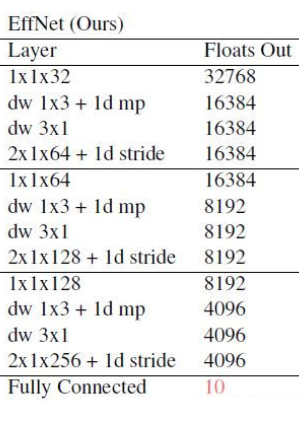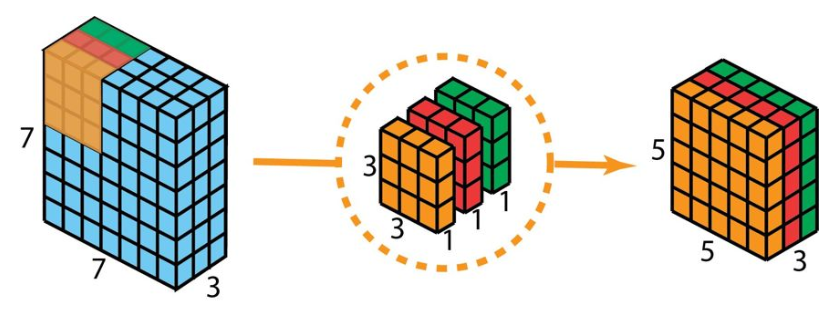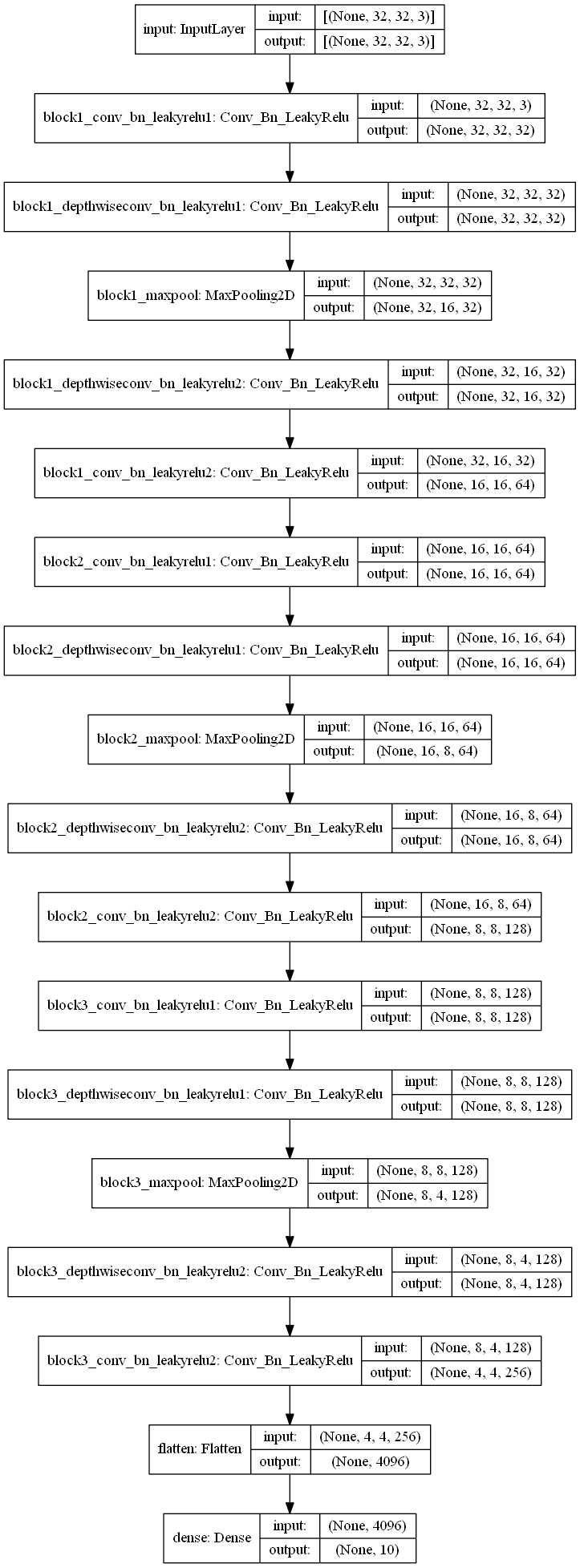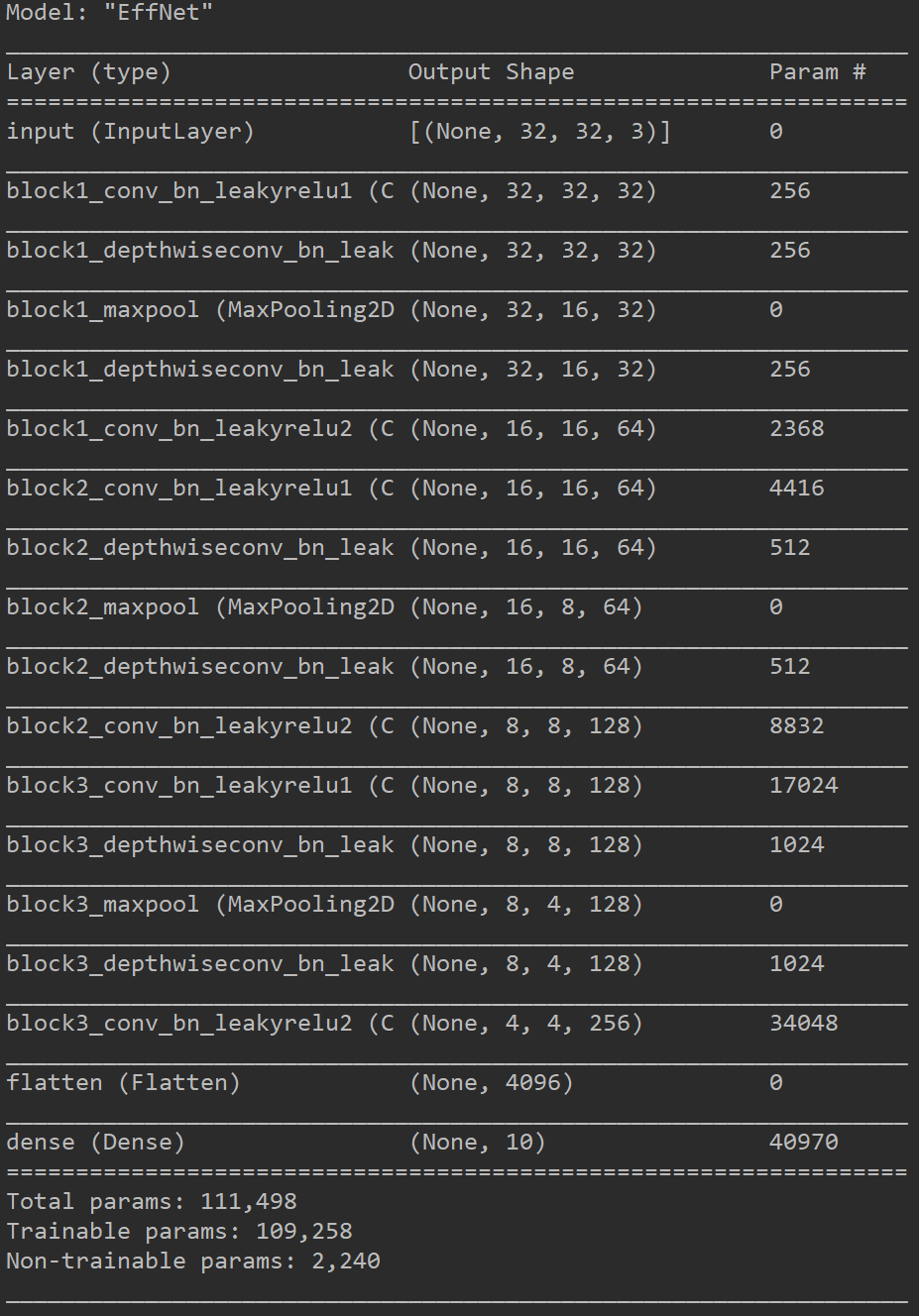背景介绍
EffNet:2018年发表于ICIP,提出一种新颖的卷积块设计,能够显著减轻计算负担,且性能远胜当前的最好的模型(对比MobileNet,ShuffleNet)。

EffNet特点
借鉴了Depthwise Convolution(深度卷积)的思想,并且将Inception中spatial separable convolutions(空间可分离卷积)的思想推广到池化分解。采用深度可分离卷积代替传统的卷积,并且卷积核采用1x3和3x1代替3x3,两次卷积核之间插入一维池化核,可以进一步减少参数量。
Depthwise Convolution

Depthwise Convolution(深度卷积):在每一个通道上单独进行卷积**
参数depth_multiplier默认为1,代表每个通道数进行一次单独卷积,输出的通道数和输入通道数相等,设置depth_multiplier=n,则代表每个通道数进行n次单独卷积,输出通道数是输入通道数的n倍。
主要作用是大大降低网络的参数量。如果一个8x8x1024的特征图,经过5x5的卷积核后变为8x8x1024的图像,经过普通卷积的参数量为1024x(1024x5x5+1)=26215424,而深度卷积参数量为1024x(1x5x5+1)=26624,参数量缩小了约1024倍。
Spatial Separable Convolution

Spatial Separable Convolution(空间可分离卷积):将3x3的卷积分解为3x1的卷积核1x3的卷积,将7x7的卷积分解为7x1的卷积核1x7的卷积.。
主要作用是大大降低网络的参数量。如果一个64x64x256的特征图,经过7x7的卷积核后变为64x64x256的图像,经过普通卷积的参数量为256x(256x7x7+1)=3211520,而空间可分离卷积参数量为2x256x(256x7x1+1)=918016,参数量缩小了约3.5倍。
EffNet图像分析

TensorFlow2.0实现
1 | from functools import reduce |

EffNet小结
EffNet给我们提供了一种一维池化的思路,虽然论文中以Cifar10作为数据集,参数量无法和其他模型进行直接的对比,但是模型的使用效果却优于MobileNet和ShuffleNet。